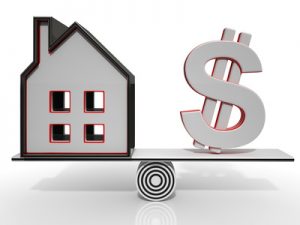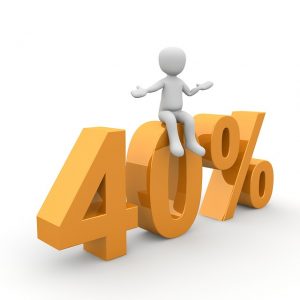5 Formulas for Evaluating Property Deals
Having worked closely with many property investors, I’ve had the privilege of learning from other investor’s successes and mistakes. I’ve gained an inside look at the decision-making processes that people go through before buying an investment property.
While a small minority is well calculated and disciplined, I’ve seen that most investors make multi-six-figure financial decisions based on emotion, gut feelings or another person’s opinion. One of our primary aims at PropertyInvesting.com is to provide an antidote for this approach by teaching people how to base their decisions on solid facts and take responsibility for their own financial future.
If you’ve read From 0 to 260+ or been through Steve’s Property Apprenticeship course, the formulas I’m about to share with you will look familiar. The purpose of using these calculations is to quantify the outcome of the investment decision, so that you can clearly see how the deal stacks up in relation to other opportunities. Whether you’re considering buying a new property, or selling a property you already own, these formulas will help guide you.
Here are the five basic number crunching formulas every property investor should know:
1. Gross Rental Return (GRR)
 This is the most basic of the five formulas. This is the return that gets thrown around by most agents who try to sell investment properties. It’s also the same formula used when people refer to rental yield.
This is the most basic of the five formulas. This is the return that gets thrown around by most agents who try to sell investment properties. It’s also the same formula used when people refer to rental yield.
To calculate the gross rental return, you simply divide the gross annual rent by the property’s value or purchase price:
(Annual Rent/Purchase Price) x 100
For example, if your property is worth $500,000, and your tenant is paying $450 per week, your gross rental return is:
$450 x 52 = $23,400 / $500,000 = .0468 x 100 = 4.68%
Most people base the annual rental income on 100-percent occupancy and before any management fees. If you’re a little more conservative, you could multiply the weekly rent by 51, instead of 52.
If you’re considering buying an investment property that already has a tenant, be sure to calculate the rent on what is currently being paid, not an inflated figure that the agent may suggest.
If you’re evaluating the GRR on a property that you currently hold, base the calculation on the current market value, not your purchase price. Your rental return 10 or 20 years ago is no longer relevant.
If you’re using this formula to evaluate a renovation project, factor your renovation costs into your purchase price, so you can see what the gross yield will be after the renovation with a higher rent, compared to before renovations at the current rental value.
2. Return On Investment (ROI)
 While accountants are often big fans of return on investment, it personally means nothing to me when it comes to evaluating a leveraged property deal.
While accountants are often big fans of return on investment, it personally means nothing to me when it comes to evaluating a leveraged property deal.
Accountants use ROI to work out how much or more often, how little, income is generated per year by an asset. It’s like the GRR, but it’s a net return, factoring costs into the top figure.
To calculate the ROI, simply divide annual profit by the purchase price:
(Annual Profit/Purchase Price) x 100
For example, let’s say you purchase a property for $500,000 with a 20% deposit, and your annual rent is $23,400. Your rental management fee is 8%, and you pay 5% interest on an interest only loan. Your rates and insurance are $4,000 for the year. Here’s the calculation:
$23,400 – ($23,400 x .08) – ($400,000 x .05) – $4,000 = -$2,472 / $500,000 = -.5%
This property is negatively geared with an ROI of .5%. If you own this property, it cost you about $200 per month to own. It may not sound like much, but you wouldn’t want to own too many of them. As a dollar amount, your profit / loss is important to know. As a percentage of purchase price, it doesn’t mean much.
The biggest weakness of ROI is that it fails to consider that the majority of the purchase of a real estate asset is accomplished using borrowed money. If you paid cash for the property, it would have some value, but you likely wouldn’t pull $500,000 out of your bank account to buy a house. While interest costs are factored in, this formula isn’t really giving you a full enough picture of reality to make a solid investing decision.
3. Cash-On-Cash Return (CoCR)
 Because I’ve learned most of what I know about real estate from Steve, this formula is one of my favourites, especially for quick cash deals.
Because I’ve learned most of what I know about real estate from Steve, this formula is one of my favourites, especially for quick cash deals.
Unlike ROI, this calculation considers the reality that much of the deal is financed using other people’s money. Simply divide your cash out of the deal by your cash into the deal:
(Cash Back/Cash Down) x 100
For example, let’s say you purchase a property for $500,000, and put 20% down as a deposit. Your weekly rent is $450, your rental management fee is 8%, you pay 5% interest on an interest only loan, and your rates and insurance are $4,000 for the year. Here’s the calculation:
$23,400 – ($23,400 x .08) – ($400,000 x .05) – $4,000 = -$2472 / $100,000 = -2.47%
We used the exact same calculation as ROI for the top figure, but for the bottom figure we used the deposit amount. Even a 3% return in a term deposit beats a negative CoCR.
To justify this deal, you would need to speculate on some significant capital growth. But, if you’ve been around the PropertyInvesting.com community for long, you know that’s not the way we roll.
Comparing the CoCR to the risk-free return of a term deposit is a helpful exercise. When you’re clear on what else you could be doing with your money, it helps you to not only compare profit potential, but also compare the time and risk in the deal.
The CoCR is great for quick cash deals, as well. If you’re looking at a development opportunity, simply divide your profit projection by your cash in. It’s helpful to annualise the return, so you can compare it to other opportunities and factor time into the equation.
4. Growth On Equity Return (GoER)

One thing you may have noticed about the CoCR on a buy and hold property is that it doesn’t take into consideration the capital appreciation of a property over time.
If an investor is holding long term, this is the primary goal, so it makes sense to have a calculation that factors in growth. To work out the GoER, simply divide the expected annual growth by the current equity in the property:
(Expected Annual Growth/Current Equity) x 100
As you can see, this formula introduces the likelihood of some human error. Determining the expected annual growth can be a subjective exercise. After all, who really knows how a property will perform in the future? If you’re using this formula to determine whether or not to buy a property, or whether or not to keep a property, be sure to be conservative and realistic with your future growth expectations.
For example, let’s say you own a property worth $500,000, and you owe $400,000 on an interest only loan. Based on past performance, you expect the property to appreciate on average 5% per year. Here’s the calculation:
$500,000 x .05 = $25,000 / $100,000 = 25%
In this example, your current equity is returning you 25% per year. If you can get that annual 5% return each year, thanks to the power of leverage, this sure beats a 3% term deposit.
But let’s say you know you could do a development deal over the next year that would turn your $100,000 equity into $150,000. That would be a 50% cash on cash return. If you were certain you could pull off that deal within 12 months, would you sell your 5% annual growth property? Just looking at the numbers, it would seem to make sense, especially if you knew you could do it again the following year.
5. Net Profit Percentage (NPP)
 While the GoRR factors in growth, it fails to also consider the cash flow from the property. Both are important, so this is where the net profit percentage comes in handy.
While the GoRR factors in growth, it fails to also consider the cash flow from the property. Both are important, so this is where the net profit percentage comes in handy.
It offers a complete and comprehensive view of your real estate investment. To work out the NPP, simply add your annual cashflow and your annual expected growth, then divide that figure by your equity or cash into the deal:
[(Annual Cash Flow + Annual Expected Growth)/Cash Down] x 100
Let’s work through an example. Let’s say you buy the same property we’ve already discussed. Your purchase price is $500,000, and you put 20% down as a deposit. Your weekly rent is $450 and your rental management fee is 8%. You pay 5% interest on an interest only loan, and your rates and insurance are $4,000 for the year. Here’s the calculation, using the same results from above:
(-$2472 + $25,000) / $100,000 = 22.5%
Factoring in your paltry $450 per week rent gives you a clearer picture of what you’re annual unrealised profit really looks like. As long as you keep getting that 5% growth per year, this deal seems to be a winner. Just keep in mind that while this deal looks good on paper, there’s no real profit until the property is sold.
Conclusion
It’s useful to crunch the numbers using all of these formulas, not only when you are evaluating a potential property purchase, but also periodically on the properties that you already own. Knowing when it’s time to sell is just as important as knowing whether or not to buy.
In Steve McKnight’s Property Apprenticeship course, we take a much deeper look at the importance of these formulas. Not only are there three full sessions on number crunching, but virtually all of Module 3 focuses on multiple facets of due diligence and the buying process.
Comments
Got something to say? Post a comment...
You must be logged in to post a comment.





Jason,
This is a well written article summarizing the basic formulas. I can see why CoCR is your favorite, as deals with real values and not perceived in capital growth.
At the end of the the day, these numbers are a good indicator, but need to be compared to base indicator with personal comfortable risk factored into it, to select the best deal.
Regards,
P
Thanks for your comment Peter. You’re exactly right. We’re not only concerned about profit, but also time, risk, and aggravation.